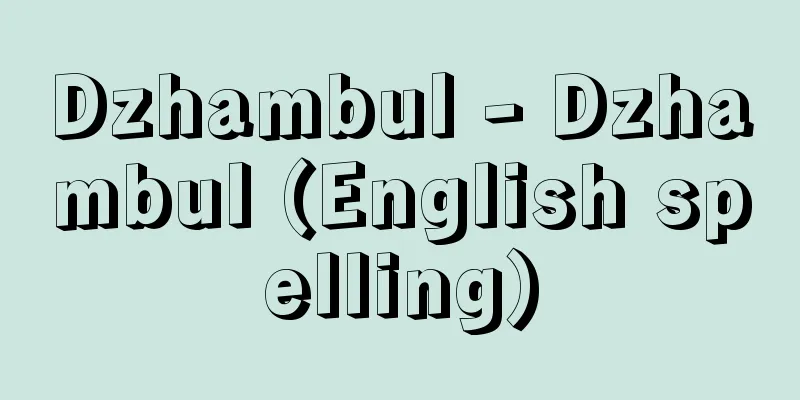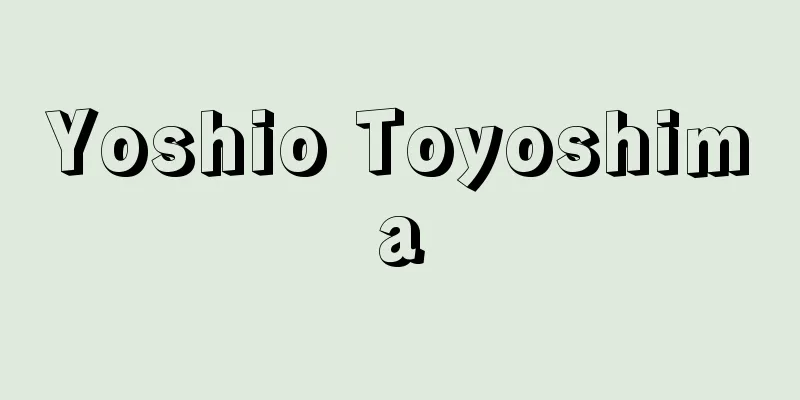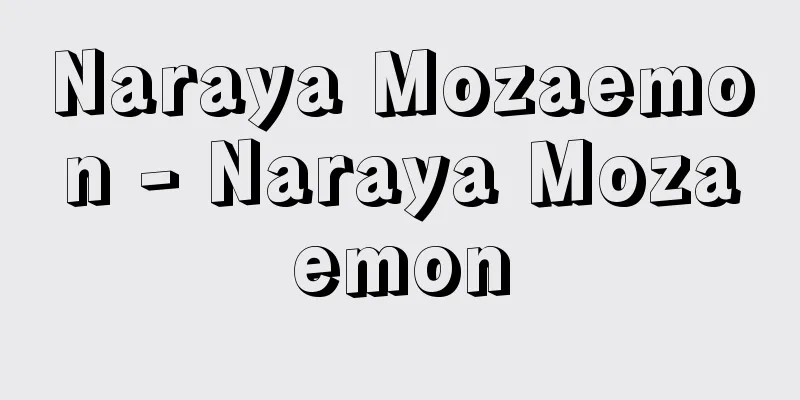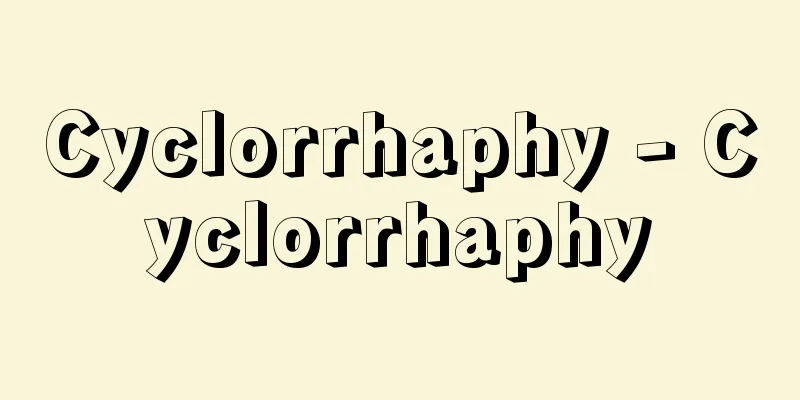Rehabilitation - Rehabilitation (English spelling)

|
When a person has a physical or mental disability due to illness or injury, the family and social life that would have been natural to them is restricted. Rehabilitation is a series of actions taken to maximize the remaining abilities of such a person, develop new abilities, improve their independence, and enable them to return to an active life. The main purpose of rehabilitation is to fully restore the injured "right to live like a human being" of a person with a disability ("full human restoration"). Training to restore the function of paralyzed limbs, which is generally abbreviated to "rehabilitation," is only a small part of this. The term has long been used in the holistic sense of "restoration of rights, qualifications, and honor," and is also used in the phrase "Rehabilitation of Joan of Arc" (the revocation of the innocent crime of being burned at the stake as a heretic and the restoration of honor). In Japan, it was once called social reintegration, rehabilitation, and medical education, but the word "rehabilitation" came to be used as it is around 1960 (Showa 35), and has since become established. [Ueda Satoshi] FieldRehabilitation is comprehensive in nature and is traditionally divided into four areas: medical, vocational, educational and social. Medical rehabilitation is carried out by medical staff, mainly doctors, and aims to restore and improve basic daily living activities, housework abilities, and basic vocational abilities. It is broadly divided into rehabilitation for people with physical disabilities and rehabilitation for people with mental disabilities. This is usually the starting point for the entire rehabilitation process, and in some cases, goals such as returning to work or returning to housework (in the case of housewives) can be achieved with this alone. When this alone does not solve the problem, the following three types of rehabilitation are required. Vocational rehabilitation aims to improve vocational skills and realize employment through vocational counseling, vocational skills assessment, vocational training, sheltered employment, and job placement. Educational rehabilitation, also known as special needs education (formerly known as special education), is carried out in parallel with (and sometimes includes) medical rehabilitation. It provides education tailored to the special needs of children with disabilities (such as physical disabilities, visual impairments, hearing impairments, intellectual disabilities, and developmental disabilities), and aims to develop their intellectual, moral, and physical education, as well as their character. Social rehabilitation provides various support services with the aim of improving the social life skills of people with disabilities so that they can overcome the difficulties they face in living in society. [Ueda Satoshi] OrganizationAs mentioned above, the scope of rehabilitation is broad, so people from a wide variety of fields are involved overall. Not only do specialists from fields such as medicine, education, vocational, social welfare, psychology, engineering, and administration participate, but ordinary members of the public also play a major role through volunteer activities. People with disabilities and their families are also active participants. It is important that these people form a team and work toward a common goal through close cooperation. Taking medical rehabilitation for physically disabled people as an example, there are more than ten types of professionals involved, including doctors (rehabilitation doctors), nurses, physical therapists, occupational therapists, speech-language-hearing therapists, as well as prosthetists, social workers, and clinical psychologists, and public health nurses, care workers, vocational rehabilitation counselors, recreation leaders, teachers, etc. These professionals form a patient-centered team led by a doctor, and provide rehabilitation medicine through a team approach according to the individual goals and programs created for each patient. [Ueda Satoshi] HistoryOf the four areas of rehabilitation, education has the longest history, and "special education" for blind and deaf children dates back to the 18th century worldwide and the 19th century in Japan. The other areas developed in the 20th century. During World War I, the rehabilitation of wounded soldiers became a social issue, especially in the United States, and related systems were created, promoting vocational rehabilitation. During the interwar period, especially in the 1920s and 1930s, polio became widespread, and medical rehabilitation was widely carried out and technology advanced. During World War II, there was a shortage of hospital beds for the huge number of wounded soldiers, and early ambulation, which had been practiced in some hospitals before then, was widely practiced, mainly in American hospitals, proving the harmful effects of bed rest and the benefits of exercise. In addition, active rehabilitation of wounded soldiers was carried out at the hospital at Jefferson Air Force Base in Missouri from 1942 to 1945, and achieved great results, which became the catalyst for the development of medical rehabilitation after the war. This was led by Howard A. Rusk (1901-89), who founded the Institute of Rehabilitation Medicine at New York University shortly after the war and became a professor and director there; he is considered the founder of rehabilitation medicine. In Japan, Takagi Kenji (1888-1963), professor of orthopedic surgery at the University of Tokyo, advocated the need for "rehabilitation" for physically disabled children since the mid-Taisho period, and promoted the rehabilitation of children with physical disabilities, mainly those caused by polio. Rehabilitation was an integration of medical care and education (general education and vocational education), and was a pioneer in the idea of comprehensive rehabilitation. During World War II, there was progress in the rehabilitation of wounded soldiers, especially in the production of prosthetic limbs and training for amputees. After the war, in response to the aging of society and influenced by American medicine, rehabilitation of adults and the elderly became more popular. In 1963 (Showa 38), the Japanese Society of Rehabilitation Medicine was founded, and Japan's first school for physical therapists and occupational therapists was opened in Kiyose, Tokyo (the first national examination was held in 1966). In 1965, the 3rd Pan-Pacific Rehabilitation Conference (Tokyo) was held, contributing to the dissemination of the idea of "comprehensive rehabilitation." This was accompanied by the development of rehabilitation as a science and technology. Taking the methodology of rehabilitation medicine as an example, this can be divided into the following three periods. The first period can be seen as prehistory, during which the orthopedic approach that began in the 1920s and was primarily aimed at polio, namely the methodology for dealing with peripheral movement disorders (classical exercise therapy theory centered on muscle testing and strength training), was established. The second period began in the late 1940s, when the neurological approach, i.e., methodology for dealing with central movement disorders, was developed. This was a period when the methodologies from the two fields of orthopedics and neurology were organically integrated, and rehabilitation medicine became independent as a clinical specialty. The third period, from the 1960s onwards, was when methodologies for elementary mental dysfunction such as aphasia, apraxia and agnosia (methodologies for dealing with higher brain dysfunction) began to be established. Only when these three methodologies were in place could rehabilitation medicine, in the broad sense of the term movement disorder medicine, be able to address all disorders of motor behavior. [Ueda Satoshi] FeaturesAll four fields of rehabilitation have commonalities and distinctive features that distinguish them from related general fields (general education for special needs education, general vocational training for vocational rehabilitation, and general social welfare for social rehabilitation). Here, we will take rehabilitation medicine as an example and list three characteristics that distinguish it from general medicine. (1) Medicine of Rehabilitation The ultimate goal of therapeutic medicine is to return the body to a healthy state (complete recovery), but the philosophy of rehabilitation medicine is that even if complete recovery is not possible, the patient's right to live a humane life can be restored, in other words, rehabilitation is possible. The difference is that rehabilitation does not give up (or abandon) patients even when a cure is not possible. If the patient or their family realizes that "I am not as cured as I thought, but I am getting better in my daily life," the effectiveness of rehabilitation is recognized. (2) Medicine of Disabilities Even when treatment of a disease is no longer expected to improve it, there is still a possibility of improvement in the remaining disabilities, and rehabilitation medicine pursues this. Medicine of disabilities requires cross-disciplinary specialization, which is also a characteristic of rehabilitation medicine as a science and technology. For example, functional disabilities such as hemiplegia are caused by a variety of different diseases, including stroke, cerebral palsy, multiple sclerosis, brain trauma, brain tumors, and others. Each disease has a different treatment method and is handled by a different department, such as cardiology, neurology, pediatrics, orthopedics, and neurosurgery. However, from the perspective of functional disabilities, the commonality of disabilities is far greater than the differences in causative diseases or age differences. "Disability studies" is the multifaceted study of hemiplegia as a movement disorder, and it is the basis of rehabilitation medicine. It can be said to be a unique cross-disciplinary discipline that is not bound by the traditional vertical division of specialties. (3) Educational and compensatory methods Rehabilitation is generally seen as a medical science of training, mainly using various types of training such as exercise therapy, occupational therapy, and speech therapy as treatment techniques, but these have a strong educational and compensatory character. Education here refers to motor learning, which is learning through training to move a body that cannot move properly due to a disability correctly and to perform necessary actions. Furthermore, more important than such training of the limbs and language is learning to "accept" the disability and live positively, and rehabilitation can be said to be a major process of human education. Accepting this disability does not mean "giving up," but rather a change in values that "a disability does not diminish one's value as a human being," and is an advanced learning process of human development and progress. Compensation means that even if it is difficult to restore the function of the affected part itself, we change our perspective and use something else to achieve the same goal. There are two methods. One is compensation using healthy body parts. An example is hand reassignment, where a person with hemiplegia paralyzes their right hand, and practices writing with their left hand. In other words, it is a unique idea to improve the overall ability by utilizing the hidden potential of the healthy part. The other is compensation using assistive devices, which includes prosthetic limbs, wheelchairs, walking aids (canes), and self-help devices, and is an indispensable method for the independence of people with disabilities. Compensation using assistive devices, such as glasses in ophthalmology and hearing aids in otolaryngology, is also used in general medicine, but in rehabilitation medicine it is given a much greater weight. [Ueda Satoshi] The concept and structure of disabilityTo better understand rehabilitation, it is necessary to know the concept of disability and its unique structure. Disability is defined as "difficulties, inconveniences, and disadvantages in daily life caused by illness" and can be considered to have the following four aspects. The World Health Organization's (WHO) International Classification of Functioning, Disability and Health (ICF, 2001) defines disability as a state in which problems occur in functioning, and states that there are three levels of disability (functional/structural impairment, activity restrictions, and participation restrictions) corresponding to the three levels of functioning (mental and physical functions/structures, activities, and participation). The four aspects in this paper refer to these three (objective impairment) plus subjective impairment. (1) Functional impairment (including structural impairment) This refers to functional impairments such as paralysis and aphasia, and structural impairments such as amputation, which are caused directly by disease, etc. (defined as a health condition in the ICF). It refers to some abnormality in function or form that causes or has the potential to cause activity restriction or participation restriction. It is a disability viewed at the level of the organism. (2) Activity limitations: These arise as a result of the interrelationship between health status or functional impairment and environmental factors. This refers to a disability viewed at the individual level, in which the ability to practically perform activities of daily living that are normally considered to be able to be performed (e.g., walking outdoors, daily activities for personal care, activities necessary for work, etc.) is limited or lost. (3) Participation restrictions This refers to a state in which the exercise of basic human rights that a person once had or should have been guaranteed is restricted or prevented, resulting from the interaction between health conditions, functional disorders, activity restrictions, and environmental factors, and the person is unable to fulfill his or her legitimate social role. In other words, it refers to various handicaps (social disadvantages) that make it difficult for people with disabilities to live a humane life, and there are significant differences depending on the era, policy, country, region, etc. In other words, even if the activity restrictions are the same, the participation restrictions will vary greatly depending on the social acceptance system for people with disabilities and the level of physical barriers. The ultimate goal of rehabilitation is to minimize participation restrictions, and to achieve this, it is important to address the four factors that cause them, especially activity restrictions and environmental factors. (4) Disability as an experience Subjective disability, that is, the worries and sufferings that exist in the mind of the disabled person. In some cases, it can be much more painful than objective (external) disabilities. It is also important in that it hinders the resolution of objective disabilities and often makes them even worse. At the core of this "disability as an experience" is the value that "disabled people are of low value," which is nothing other than the prejudice against disabled people that is dominant in today's society, which has been incorporated into the mind of the person. Disabled people are by no means special people, and ordinary people become disabled, so the coexistence of multiple values should be acknowledged, but this is not the dominant value in real society. In order for disabled people to accept (overcome) their own disabilities (to change the above-mentioned value to a higher value that "the existence of a disability does not reduce one's value as a human being"), it is important for the people around them to overcome prejudice and accept the disabled person (to recognize their human value, respect and love them). At the same time, by interacting with disabled people who live strong and positive lives, the prejudice of able-bodied people is often overcome. [Ueda Satoshi] Types of disability and rehabilitationThere are two main types of disability (decline in daily living functions), and medical rehabilitation programs are therefore divided into two types. One is the "stroke model" and the other is the "disuse syndrome model." The "stroke model" is a type of rehabilitation in which daily living functions decline rapidly due to acute illness or trauma such as a stroke, fracture, or spinal cord injury, but then show a certain degree of recovery or stabilization, and rehabilitation focuses on promoting this recovery and maximizing remaining functions to improve compensatory activity abilities. Disabilities that are present from birth, such as cerebral palsy, belong to this type, as they can be considered to have occurred at birth. The only difference is that in this case, the focus is on promoting "development" rather than "recovery." Traditionally, rehabilitation targets and programs have tended to be of this type. With this type of rehabilitation, it is important to start rehabilitation as early as possible after the onset of the disability. The "disuse syndrome model" is a newly recognized type of model in which daily living functions gradually (but stepwise, if you look closely) decline due to disuse syndrome alone (the decline of mental and physical functions that are not actively used) or due to bone and joint disease or other chronic diseases accompanied by disuse syndrome, and is common among the elderly. Approximately half of people currently receiving nursing care insurance (those whose activity is restricted to a certain limit) fall into this type. The basis of rehabilitation for the disuse syndrome model is, first, to prevent disuse syndrome (maintaining an active lifestyle), and second, to detect the decline in daily living functions early and act early to restore them. In particular, disuse syndrome is often triggered by illness that does not itself cause a decline in motor function (due to excessive rest due to the belief that "rest is necessary when sick"), so in many cases it can be prevented and restored simply by minimizing rest and encouraging early mobilization (early walking). In this case, what is important in rehabilitation is not necessarily the recovery of "function" (such as muscle strengthening training), but "activity improvement training" that influences and improves "activity" itself (such as improving walking ability with a cane or walker). If we reexamine the "stroke model" from this perspective, it is not rare for strokes and other acute illnesses to already cause a certain degree of decline in daily living functions according to the disuse syndrome model before the acute onset of the disease, and after a period in which daily living functions have improved through an intensive program of several months (previously known as the "maintenance period"), the patient should be considered to transition to the "disuse syndrome model." In the past, what was often called "maintenance period rehabilitation" required long-term (almost lifelong) outpatient or day-care training, but this has the drawback of preventing the reconstruction of a normal life and lifestyle, and allowing patients to continue to feel like they are ill. Instead, what is needed as rehabilitation based on the "disuse syndrome model" is "intermittent rehabilitation," which involves preventing disuse syndrome by leading an active life, and early detection and early resolution of declines in daily living functions. [Ueda Satoshi] Medical Rehabilitation in PracticeMedical rehabilitation involves physical therapy by physical therapists (strength training, standing and walking training, prosthetic and orthotic training, etc.), occupational therapy by occupational therapists (training using activities such as woodworking, handicrafts and pottery to improve upper limb function and mental function), and speech therapy and hearing therapy to improve communication skills by speech-language-hearing therapists, all under the supervision of a doctor. Additionally, activities of daily living (ADL) and housework training are provided mainly on the wards through teamwork between nurses and these professionals. Social workers also provide support for patients' return to home, work and other areas of participation. In addition, rehabilitation for people with mental disabilities is carried out through teamwork, including drug therapy and psychotherapy by a doctor, psychiatric occupational therapy by an occupational therapist, and support to improve participation by a social worker (mental health and welfare worker). [Ueda Satoshi] "Thinking about Rehabilitation" by Ueda Satoshi (1983, Aoki Shoten)" ▽ "Visual Rehabilitation Medicine" 2nd Edition by Ueda Satoshi (1994, University of Tokyo Press)" ▽ "Rehabilitation Medicine as a Science" by Ueda Satoshi (2001, Igaku-Shoin)" ▽ "The Idea of Rehabilitation - Seeking Medical Care for the Rehabilitation of Humankind" 2nd Revised Edition by Ueda Satoshi (2004, Igaku-Shoin)" ▽ "Rehabilitation Theory and Practice" 3rd Edition edited by Ueda Satoshi (2007, Minerva Shobo)" ▽ "Encyclopedia of Rehabilitation Medicine" edited by Ueda Satoshi and Okawa Yayoi (1996, Ishiyaku-Shuppan)" ▽ "Rehabilitation and Welfare for the Mentally Disabled" edited by Akimoto Haruo, Shirabe Kazuoki, and Fujii Katsunori (1999, Chuohoki Shuppan)" ▽ "What is Functioning? Understanding and Using the ICF: International Classification of Functioning, Disability and Health" by Okawa Yayoi (2007, University of Tokyo Press)" ▽ "Living Rehabilitation: An Encounter with True Rehabilitation" by Tsurumi Kazuko, Ueda Satoshi, and Okawa Yayoi, Expanded Edition (2007, Miwa Shoten)" ▽ "Rehabilitation: Medicine for Creating a New Way of Life" by Ueda Satoshi (Kodansha Bluebacks)" ▽ "New Rehabilitation: A Challenge to Human "Restoration"" by Okawa Yayoi (Kodansha Gendai Shinsho)" ▽ "Rehabilitation" by Sunahara Shigekazu (Iwanami Shinsho)" [References] | | | | | | | | | | | | | | | |Source: Shogakukan Encyclopedia Nipponica About Encyclopedia Nipponica Information | Legend |
|
病気や外傷によって身体的あるいは精神的な障害が起こると、本来ごく自然に行われていた家庭的、社会的生活が制約されるようになるが、こうした障害のある人に対して残された能力を最大限に回復させ、また新たな能力を開発し、自立性を向上させ、積極的な生活への復帰を実現するために行われる一連の働きかけをリハビリテーションという。障害のある人の、傷ついた「人間らしく生きる権利」の全体的な回復(「全人間的復権」)を本旨とするもので、一般に「リハビリ」と略してよばれるような、麻痺(まひ)した手足の機能回復訓練などはそのごく一部である。古くから「権利、資格、名誉の回復」という全人格的な意味で使われてきた語で、たとえば「ジャンヌダルクのリハビリテーション」(異端者として火刑に処せられたという無実の罪の取消しと名誉回復)という用法もある。日本ではかつて社会復帰、更生、療育などとよばれていたが、1960年(昭和35)ごろからリハビリテーションの語をそのまま使うようになり、定着している。 [上田 敏] 分野リハビリテーションは本来総合的なものであり、伝統的に医学的、職業的、教育的、社会的の4分野に分けられる。 医学的リハビリテーションは医師を中心とした医療スタッフによって実施され、基礎的な日常生活行為や家事の能力、また基本的な職業能力の回復・向上を図る。身体障害者リハビリテーションと精神障害者リハビリテーションに大別される。普通これがリハビリテーション全体の入り口であり、これだけで復職、家事復帰(主婦の場合)などの目標を達成できる場合もある。これだけでは解決できない場合に次の3種のリハビリテーションが必要となる。 職業的リハビリテーションは、職業相談、職業能力評価、職業訓練、保護雇用、就職斡旋(あっせん)などを通じて、職業能力を高め、雇用の実現を図る。 教育的リハビリテーションは特別支援教育(旧特殊教育)ともよばれ、医学的リハビリテーションと並行して(ときにはそれを含みこんで)行われる。障害児の特別なニーズ(肢体不自由、視覚障害、聴覚障害、知的障害、発達障害など)に応じた教育を行い、知育、徳育、体育、人格形成を目ざす。 社会的リハビリテーションは障害のある人が社会生活を営むうえでの困難を克服するための社会生活力の向上を目的に、各種の支援サービスを提供する。 [上田 敏] 組織リハビリテーションの範囲は前記のように広いため、全体としてみれば各種各様の分野の人々が関与する。すなわち医学、教育学、職業面、社会福祉面、心理学、工学、行政面などの専門家が参加するばかりでなく、一般の社会人もボランティア活動を通じて大きな役割を果たしている。また障害のある人や家族も積極的な参加者である。これらの人々が一つのチームを組んで、緊密な連携のもとに目標を一つにして努力することが重要である。 身体障害者に対する医学的リハビリテーションを例にとると、参加する職種は十指に余り、医師(リハビリテーション医)をはじめ、看護師、理学療法士、作業療法士、言語聴覚士のほか、義肢装具士、ソーシャルワーカー、臨床心理士は不可欠であり、保健師、介護福祉士、職業復帰カウンセラー、レクリエーションリーダー、教師などが加わることもある。これらの専門家が医師をリーダーとし患者を中心とするチームを編成し、個々の患者ごとにつくられた個別的な目標とプログラムに従って、チームアプローチによるリハビリテーション医療を行うのである。 [上田 敏] 沿革リハビリテーションの4分野のうち教育面はもっとも歴史が古く、盲児・聾児(ろうじ)に対する「特殊教育」は世界的には18世紀、日本でも19世紀にさかのぼる。その他の分野は20世紀になって発展した。第一次世界大戦では、とくにアメリカで戦傷病者の社会復帰・職業復帰が社会問題化して、関連制度がつくられ、職業的リハビリテーションが促進された。戦間期、とくに1920~30年代にはポリオが大流行し、それに対する医学的リハビリテーションが広く行われ、技術が進歩した。第二次世界大戦では、おびただしい数の戦傷病者に対して病床が不足し、おもにアメリカの病院ではそれ以前から一部に行われていた早期離床early ambulationが広く行われ、安静の害と運動の効果が実証された。それに加えて、ミズーリ州ジェファソン空軍基地の病院で1942~45年に戦傷病兵の積極的なリハビリテーションが行われて大きな効果をあげ、これが戦後の医学的リハビリテーションの発展のきっかけとなった。これを指導したのはラスクHoward A. Rusk(1901―89)で、彼は戦後まもなくニューヨーク大学リハビリテーション医学研究所を創設し教授・所長となっており、リハビリテーション医学の創始者とされている。 日本では、東京大学整形外科教授の高木憲次(けんじ)(1888―1963)が、大正中期以来肢体不自由児の「療育」の必要を唱え、おもにポリオを原因とする肢体不自由児のリハビリテーションを推進した。療育とは医療と教育(一般教育と職業教育)を統合するもので、総合的なリハビリテーションの理念を先取りしていた。第二次世界大戦中には戦傷兵のリハビリテーション、とくに肢切断に対する義肢製作・訓練が進歩した。戦後になって高齢化社会に対応して、またアメリカ医学の影響も受けて、成人・高齢者のリハビリテーションが盛んになった。1963年(昭和38)には日本リハビリテーション医学会が発足し、日本最初の理学療法士・作業療法士学校が東京都の清瀬に開校した(1966年に第1回国家試験施行)。また1965年には第3回汎(はん)太平洋リハビリテーション会議(東京)が開催され、「総合リハビリテーション」理念の普及に貢献した。 これにはリハビリテーションの科学・技術としての発展も伴っていた。これをリハビリテーション医学の方法論を例にとってみれば、次の三つの時期に分けられる。 第1期は前史ともみられるもので、1920年代からおもにポリオを対象に始まった整形外科的アプローチ、すなわち末梢(まっしょう)性運動障害に対応する方法論(筋力テストや筋力増強訓練を中心とした古典的運動療法理論)が確立された時期である。 第2期は1940年代後半、神経学的アプローチ、すなわち中枢性運動障害に対応する方法論が生まれた時期に始まり、整形外科学と神経学の二つの分野からの方法論が有機的に統合された時期であり、リハビリテーション医学が臨床専門分科として独立した時期でもある。 第3期は1960年代以降で、失語、失行、失認をはじめとする要素的精神機能障害に対する方法論(高次脳機能障害に対応する方法論)が確立されてくる時期である。 以上の三つの方法論がそろった段階で初めてリハビリテーション医学は、広義の運動障害医学として運動行動の障害すべてに対して対応が可能となった。 [上田 敏] 特徴リハビリテーションの4分野はいずれも関連一般領域(特別支援教育にとっての普通教育、職業リハビリテーションにとっての一般職業訓練、社会リハビリテーションにとっての社会福祉一般)と共通する点と異なる特徴的な点とをもっているが、ここではリハビリテーション医学を例にとって、これが一般の医学と異なる特徴を三つ列挙する。 (1)復権の医学 治療医学では健康な体に戻ること(完全治癒)を究極の目標とするが、リハビリテーション医学では完全治癒はできなくても人間らしく生きる権利を回復すること、つまり復権はできるというのが理念であり、治癒させ得ない場合でもあきらめない(見捨てない)点が異なる。患者あるいはその家族が「思ったほど治ってはいないが、日常生活でよくなってきた」と実感できれば、リハビリテーションの効果が認められたことになる。 (2)障害の医学 疾患としては治療による改善がもはや見込めなくなった場合でも、残された障害についてみれば改善の可能性がまだ認められることが多く、リハビリテーション医学はそれを追求していく。障害の医学は横割りの専門が要求され、それがリハビリテーション医学の科学技術としての特徴ともなっている。たとえば、片麻痺(へんまひ)という機能障害は脳卒中、脳性麻痺、多発性硬化症、脳外傷、脳腫瘍(しゅよう)、その他さまざま異なる疾患を原因としておこるもので、それぞれの疾患は治療法も違い、循環器内科や神経内科、小児科、整形外科、脳神経外科など担当する科も違う。しかし、機能障害という面からみると、原因疾患の違いや年齢の相違などよりも障害としての共通性のほうがはるかに大きい。片麻痺をこうした運動障害として多面的に研究するのが「障害学」であり、それがリハビリテーション医学の基礎となる。従来の縦割りの専門分科にとらわれない独特な横割りの学問といえよう。 (3)教育的・代償的方法 リハビリテーションは一般に訓練の医学とみられやすいほど、主として運動療法、作業療法、言語療法など種々の訓練を治療手技として用いるが、これには教育的および代償的な性格が強くみられる。ここでいう教育とは、障害のために正しく動かない身体を正しく動かし、必要な行為が行えるように訓練によって学ぶことであり、運動学習をさす。さらに、こうした手足や言語の訓練よりも重要なことは、障害を「受容」して前向きに生きることを学ぶことで、リハビリテーションは一つの大きな人間教育の過程ともいえる。この障害の受容とはけっして「あきらめる」ことではなく、「障害が人間としての価値を損なうものではない」という価値観の転換であり、人間としての発達、進歩という高度な学習過程である。 また代償というのは、障害部位の機能そのものを回復させることが困難でも、見方を変えて他のものを使ってその目的を達することをいい、次の二つの方法がある。一つは健全な体の部分による代償で、片麻痺で利き手の右手が麻痺したとき、左手で字を書く訓練をする利き手変換がその例である。すなわち、健全な部分の隠れた可能性を活用することにより、全体としての能力を向上させるという独特の考え方である。もう一つは補助具による代償で、義肢をはじめ、車椅子(いす)や歩行補助具(杖類)や自助具などが用いられ、障害者の自立のためには欠かせない方法である。一般医学でも眼科での眼鏡や耳鼻科での補聴器のように補助具による代償は行われているが、リハビリテーション医学ではこれがはるかに大きな比重をもっている。 [上田 敏] 障害の概念と構造リハビリテーションをよりよく理解するためには、障害についての概念と独特の構造を知る必要がある。障害とは「疾患によって引き起こされた生活上の困難、不自由、不利益」と定義され、下記のような四つの側面があると考えられる。なお世界保健機構(WHO)の国際生活機能分類(ICF、2001)は生活機能(functioning)に問題が生じた状態を障害(disability)と定義し、生活機能の三つのレベル(心身機能・構造、活動、参加)に対応して障害にも三つのレベル(機能障害・構造障害、活動制限、参加制約)があるとしている。本論の四つの側面とは、この三者(客観的障害)に主観的障害を加えたものである。 (1)機能障害(構造障害を含む) 麻痺、失語などの機能障害と肢切断などの構造障害をいい、疾患等(ICFでは健康状態)から直接引き起こされる。活動制限や参加制約の原因となる、またはその可能性のある機能や形態のなんらかの異常をさしている。生物としてのレベルでとらえた障害である。 (2)活動制限 健康状態や機能障害と環境因子との相互関係でおこるもので、個人のレベルでとらえた障害をいい、通常当然行うことができると考えられる生活行為(戸外を歩く、日常の身の回り行為、仕事に必要な行為など)を、実用性をもって行う能力が制限あるいは喪失した状態をさす。 (3)参加制約 健康状態・機能障害・活動制限と環境因子との相互作用としておこった、かつて有していた、あるいは当然保障されるべき基本的人権の行使が制約または妨げられ、正当な社会的役割を果たすことができない状態をいう。すなわち、障害のある人が人間らしく生きていくことを困難にする種々のハンディキャップ(社会的不利)のことで、時代や政策、国や地域などによってその差が著しい。すなわち活動制限は同じでも、障害者に対する社会の受け入れ体制や物理的障壁(バリア)の程度によって参加制約は大きく違ってくる。リハビリテーションの最終目的は参加制約を最小限にすることであり、そのためにはこれをおこす前記の四つの要素、とくに活動制限と環境因子への働きかけが重要である。 (4)体験としての障害 主観的障害、すなわち障害者自身の心の中にある悩みや苦しみといったものである。場合によっては客観的(外面的)な障害よりも、はるかにつらいものとなりうる。これがあると、客観的な諸障害の解決を妨げ、しばしばいっそう悪化させるという点でも重要である。この「体験としての障害」の中核にあるのは「障害者は価値の低いもの」という価値観であり、これは現社会に支配的な、障害者に対する偏見が本人の心の中に取り入れられたものにほかならない。障害者はけっして特別な人でなく、ごく普通の人が障害者になるわけで、多元的な価値の併存を認めるべきであるが、現実の社会の優勢な価値観はそうではない。障害者が自己の障害を受容(克服)する(前記の価値観を「障害の存在が自己の人間としての価値を低めるものではない」というより高い価値観へと転換する)ためには、周囲の人々が偏見を克服してその障害者を受容する(人間的価値を認め、それを尊敬し愛する)ことが重要である。また同時に強く前向きに生きる障害者に接することによって健常者の偏見も克服される場合が多い。 [上田 敏] 障害発生とリハビリテーションの類型障害(生活機能低下)の起こり方には大きく分けて二つの類型があり、それにより医学的リハビリテーションのあり方(プログラム)も二つの類型に分かれる。一つは「脳卒中モデル」、もう一つは「廃用症候群モデル」である。 「脳卒中モデル」とは、脳卒中、骨折、脊髄損傷のように急性に発症した疾患・外傷によって生活機能が急激に低下するが、その後一定の回復や安定化をみせるタイプで、リハビリテーションはその回復を促進したり、残された機能を最大限に活用して代償的な活動能力を向上させたりすることが中心となる。脳性麻痺などの出生時から存在している障害は、出生時に障害が発生したものとみなすことができるのでこの類型に属する。この場合は「回復」ではなく「発達」を促進する点が異なるだけである。従来はリハビリテーションの対象もプログラムもこのようなものが主流と考えられがちであった。この類型では障害発生後できるかぎり早期からのリハビリテーション開始が重要である。 「廃用症候群モデル」とは新しく認識された類型で、廃用症候群(disuse syndrome、活発に使用しない心身の機能は衰えること)単独で、あるいは骨関節疾患その他の慢性疾患に廃用症候群が伴ったことによって生活機能が徐々に(しかし細かくみれば階段状に)低下していくもので、高齢者に多い。現在介護保険を受給するようになった人(活動がある限度以下に制限された人)でみると約半数がこの類型である。廃用症候群モデルに対するリハビリテーションの基本は第一に廃用症候群の予防(活動的な生活の維持)であり、第二には生活機能の低下を早期に発見し、早期に働きかけて回復させることである。とくに廃用症候群は、それ自体は運動機能の低下を起こさない病気を契機にして起こる(「病気のときには安静が必要」との思い込みによる安静のとりすぎで)ことが多いため、安静を必要最小限にし早期離床(早期歩行)を図るだけでもその多くは予防・回復できる。この場合のリハビリテーションとして大事なのは、かならずしも「機能」の回復(筋力増強訓練など)ではなく、「活動」そのものに働きかけて向上させる「活動向上訓練」(杖やシルバーカーによる歩行能力の向上など)である。 こういう目で「脳卒中モデル」を見直すと、脳卒中その他の急性疾患でも、急性発症以前にすでに廃用症候群モデルの生活機能低下をある程度起こしていることが少なくなく、また数か月の集中的なプログラムによって生活機能が向上した時期以降(これまでは「維持期」とよばれていたもの)は、「廃用症候群モデル」に移行するものとみるべきである。従来「維持期のリハビリテーション」と称して、長期(ほぼ生涯)にわたって外来・通所の訓練が必要とされてきたことが多かったが、それには正常な生活・人生の再建を妨げ、いつまでも病人意識を温存させる弊害もある。そうではなく「廃用症候群モデル」のリハビリテーションとして、活発な生活を送ることによる廃用症候群の予防と、生活機能低下の早期発見・早期解決という「間欠的(断続的)リハビリテーション」が必要なのである。 [上田 敏] 医学的リハビリテーションの実際医学的リハビリテーションでは医師の指示のもとに、理学療法士による理学療法(筋力増強訓練、起立・歩行訓練、義肢・装具訓練など)、作業療法士による作業療法(上肢機能向上、精神機能向上などを目的に木工、手芸、陶芸などの活動を利用した訓練)、言語聴覚士によるコミュニケーション能力向上のための言語療法、聴覚療法が行われる。また看護師とこれらの職種のチームワークによる日常生活行為(ADL)訓練、家事訓練が病棟を中心に行われる。またソーシャルワーカーが家庭復帰、職場復帰、その他の参加向上に向けて支援する。 また、精神障害者リハビリテーションは、医師による薬物療法や精神療法と作業療法士による精神科作業療法、ソーシャルワーカー(精神保健福祉士)による参加向上支援などがチームワークで行われる。 [上田 敏] 『上田敏著『リハビリテーションを考える』(1983・青木書店)』▽『上田敏著『目でみるリハビリテーション医学』第2版(1994・東京大学出版会)』▽『上田敏著『科学としてのリハビリテーション医学』(2001・医学書院)』▽『上田敏著『リハビリテーションの思想―人間復権の医療を求めて』第2版増補版(2004・医学書院)』▽『上田敏編『リハビリテーションの理論と実際』三訂版(2007・ミネルヴァ書房)』▽『上田敏・大川弥生編『リハビリテーション医学大辞典』(1996・医歯薬出版)』▽『秋元波留夫・調一興・藤井克徳編『精神障害者のリハビリテーションと福祉』(1999・中央法規出版)』▽『大川弥生著『生活機能とは何か――ICF:国際生活機能分類の理解と活用』(2007・東京大学出版会)』▽『鶴見和子・上田敏・大川弥生著『回生を生きる――本当のリハビリテーションに出会って』増補版(2007・三輪書店)』▽『上田敏著『リハビリテーション 新しい生き方を創る医学』(講談社・ブルーバックス)』▽『大川弥生著『新しいリハビリテーション 人間「復権」への挑戦』(講談社現代新書)』▽『砂原茂一著『リハビリテーション』(岩波新書)』 [参照項目] | | | | | | | | | | | | | | | |出典 小学館 日本大百科全書(ニッポニカ)日本大百科全書(ニッポニカ)について 情報 | 凡例 |
<<: Rehabilitation engineering
>>: Libanius (English spelling)
Recommend
Gardner, EJ
…A disease that was reported by E. J. Gardner of ...
jeu de dames (English spelling)
...A board game played by two people. Checkers is...
Atany - Atany
…Higher-ranking lawyers (sergeants, later barrist...
Naomoto Tachibana
Date of birth and death unknown. A Chinese poet o...
Ise Province
One of the Tokaido provinces. The old name of the...
Sound pressure distribution - Onatsubumpu
...(2)Short tone response: A pulse sound is emitt...
Ketaka [town] - Ketaka
A former town in Kedaka District facing the Sea of...
Some companies - Kisha (English spelling) Jǐ shè
A literary society founded in the Huating Pavilion...
Vernet, H.
...French painter. Born in Avignon. He lived in I...
POD - P.O.D.
The Pocket Oxford Dictionary : The Oxford Pocket E...
《Paper Heal》 - Kamiji
… [Hirosue Tamotsu] [Influence on Japanese music]...
Flower basket - Keko
A type of Buddhist implement. A container for scat...
Empress's Palace Office
〘Noun〙① Under the Ritsuryo system, this was an off...
Xanthommatine
A type of pigment compound called ommochrome. It i...
Taipei
The central city of Taiwan. It is located in the ...









